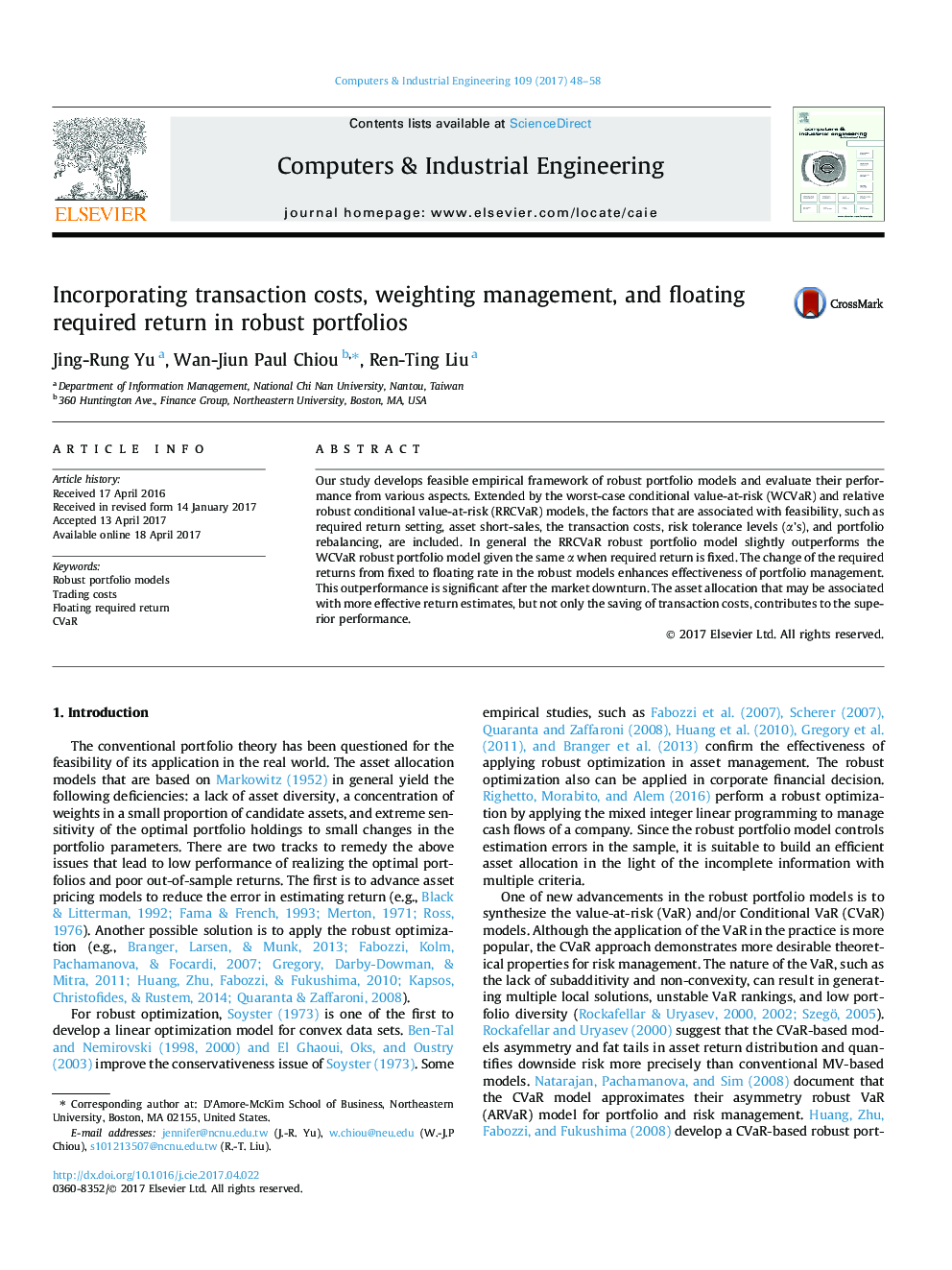| Article ID | Journal | Published Year | Pages | File Type |
|---|---|---|---|---|
| 5127669 | Computers & Industrial Engineering | 2017 | 11 Pages |
â¢We advance robust portfolio models in international diversification.â¢We model short-sales, trading costs, minimal threshold for the change of weights.â¢We evaluate ex ante and ex post performance.â¢The RRCVaR model outperforms the WCVaR model.â¢Floating required returns improve effectiveness of the robust portfolio models.
Our study develops feasible empirical framework of robust portfolio models and evaluate their performance from various aspects. Extended by the worst-case conditional value-at-risk (WCVaR) and relative robust conditional value-at-risk (RRCVaR) models, the factors that are associated with feasibility, such as required return setting, asset short-sales, the transaction costs, risk tolerance levels (α's), and portfolio rebalancing, are included. In general the RRCVaR robust portfolio model slightly outperforms the WCVaR robust portfolio model given the same α when required return is fixed. The change of the required returns from fixed to floating rate in the robust models enhances effectiveness of portfolio management. This outperformance is significant after the market downturn. The asset allocation that may be associated with more effective return estimates, but not only the saving of transaction costs, contributes to the superior performance.
